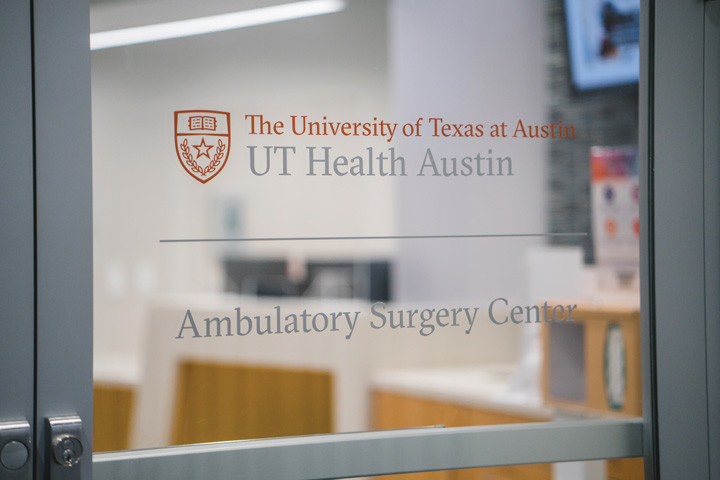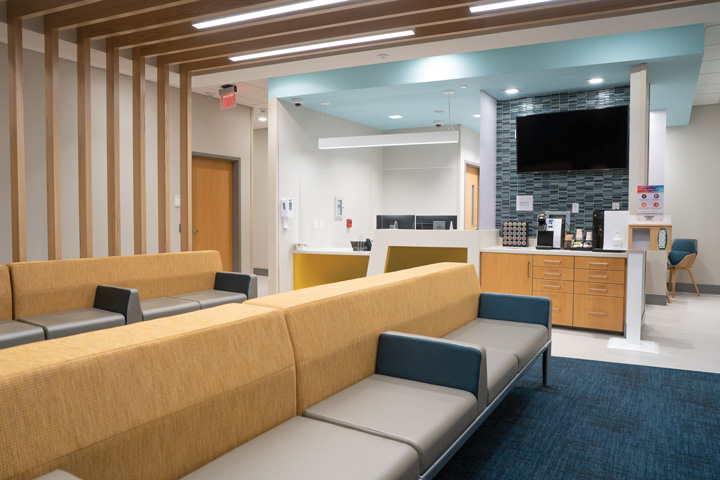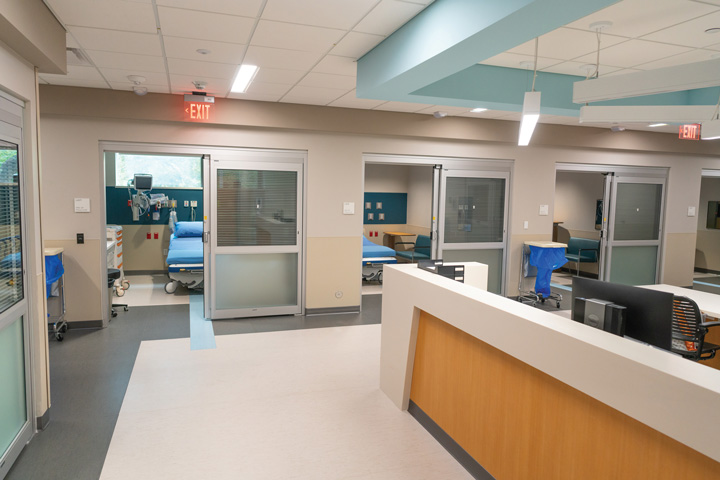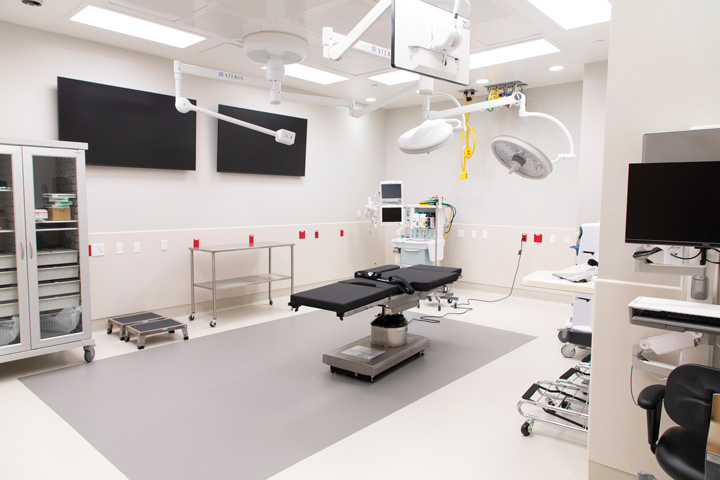- Home
- Article
Facility Spotlight: Texas Style
By: Amy Young, MD; Stuart Wolf, MD; Jessica Hovland, DNP, RN
Published: 7/11/2023
The UT Health Austin Ambulatory Surgery Center, built with accessibility, convenience and efficiency in mind, bolsters its surrounding medical learning environment and gives patients a one-of-a-kind care experience.

On January 19, 2021, in the midst of a global pandemic, the UT Health Austin Ambulatory Surgery Center officially opened its doors — and we haven’t looked back since. Our 21,000-square-foot surgery center — which will eventually house five ORs (currently three) as well as a spacious lobby, sterile processing department, break room, eight PACU bays and 13 pre- and post-op rooms — was built to augment the surrounding medical learning environment.
This affords The University of Texas at Austin Dell Medical School students and residents a distinguishable learning opportunity, among live clinical care areas where they absorb real-life experiences that mold their future medical practice.

Sleek lines, vibrant colors
All UT Health buildings are inviting, with clean, distinct designs that welcome visitors as soon as they walk through the door — and the Ambulatory Surgery Center is certainly no exception. The standout design features include sleek lines and vibrant colors organized to enhance efficiency. Patients understand that they are part of something unique — the holistic model of patient-centered care is evident as individuals enter the building, visit their doctors on one floor and have surgery on another (the surgery center is located on the first floor). This integration gives patients comfort, as does being greeted by staff who welcome them with warmth and compassion. One of the unique features of the surgery center is our video monitors with real-time surgical schedule updates. Each monitor is customized to its location. In the lobby, friends and families can follow their loved one throughout the perioperative journey through a de-identified case number. In the break room, the monitor displays the patient’s status in more detail, which allows physicians and staff to maximize efficiency and be in the right place at the right time.

Interconnected flow
The Ambulatory Surgery Center was built with accessibility, convenience and efficiency in mind. Case in point: All the perioperative departments are interconnected by an oblong hallway with two entrances to the OR and two entrances to the pre- and post-op area. This helps clinicians get to where they need to be quickly, and also helps the patient understand that their perioperative journey is a “cycle.” Speaking of efficiency, in the PACU and OR, nurses are able to assign staff to individual rooms, so the staff know their patient assignments and can facilitate increased communication and efficient plans of care. This same schedule is also available on each of the nursing workstations so that the staff can update the location of the patient in real time. This is an example of how design and clinical optimization contribute to optimal patient outcomes, which is confirmed through our high patient satisfaction scores.
State-of-the-art technology

UT Health Austin’s Ambulatory Surgery Center invests in the latest state-of-the art equipment such as a 3D microscope for ophthalmic surgery and all-in-one towers for laparoscopic surgery. Investments in various instrumentation were also made to support advanced procedures in seven different surgical service lines supporting close to 50 different surgeons.

Lights with dimming capabilities were installed in both the pre- and post-op areas to accommodate various needs — such as when patients’ eyes are dilated for cataract procedures or if they experience nausea after surgery. The customized nursing environment gives the staff full freedom to optimally care for every patient who comes through the doors of the facility. OSM
.svg?sfvrsn=be606e78_3)
.svg?sfvrsn=56b2f850_5)